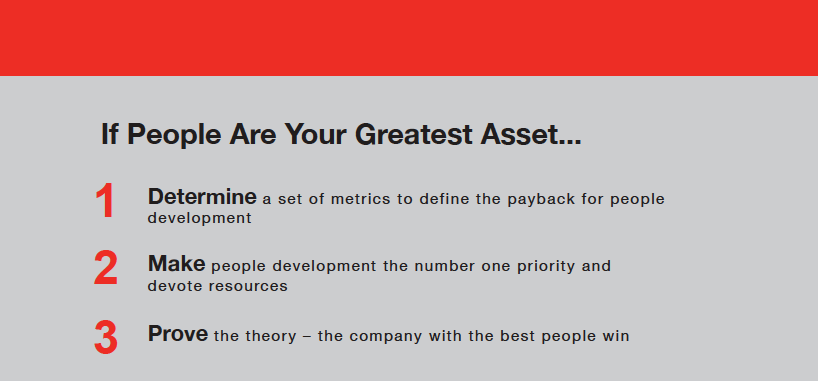Why the Disconnect?
Featured in Muncie Power Quarterly, Issue 4, 2017
One of the quotes you’ll hear most often from CEOs is that “Our people are our greatest asset.” But I wonder how many have gone through the exercise of quantifying what a statement like this means or how to measure it. With complete justification for this statement then surely each would prioritize people matters first within their staff meetings and at budget time. If not, then why the disconnect when identifying their greatest asset and then prioritizing time and expense-related investments accordingly? You would think that we would all want to fund and measure progress where we have the most potential to maximize results.
My intent here is not to be critical of others, but rather to get all of us thinking collectively. Although we have certainly made great strides at Muncie Power Products in the area of people development, we have not created a culture that consistently prioritizes people development matters at the top of investment plans and operational reviews. Not to sound redundant but again, why the disconnect?
During our monthly Think Week sessions a few months ago, I suggested that we move our people development reports—including metrics—to first on the list for review. Following all people development reporting would be sales initiatives, manufacturing, new product development, etc. I got the sense that everyone was thinking, it is about time! So, why the delay?
While I truly believe our people are our greatest asset, we have not established a compelling case for a payback in investment. We have not yet found the vehicle of influence that ties the development of people back to results. And in business, it’s all about results. Like most of us, we believe the tie exists but we just haven’t bridged the gap between belief and return on investment.
 We know how to calculate payback on investment as we do it every year to justify things such as machinery purchases, building expansion and product development. As leaders, we have to THINK about what drives cost and sales. I am convinced that if we collectively THINK about a set of metrics that defines payback for people development together, we can prove our theory: The company with the best people win.
We know how to calculate payback on investment as we do it every year to justify things such as machinery purchases, building expansion and product development. As leaders, we have to THINK about what drives cost and sales. I am convinced that if we collectively THINK about a set of metrics that defines payback for people development together, we can prove our theory: The company with the best people win.
I have to tell you, before we embark on this process, I am going to caution myself to not get caught up in requiring guaranteed results from people development proposals. Whether it’s been for new machinery, new products or sales initiatives, I have never seen a proposal for any of these that came with a guarantee either. You can have great people, but put them in a bad process and it’ll generate horrible results. It is not as simple as one might think as there are always assumptions along the way. Regardless, one thing remains certain—which is that once we comprehend that the potential payback for investment in people is huge—people development will be the first thing we talk about in every staff meeting.


